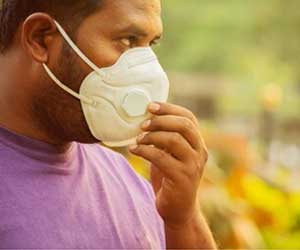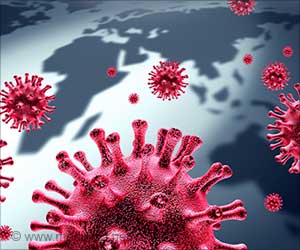Patients with persistent respiratory symptoms are more likely to test positive for the coronavirus, finds a new study in the American Journal of Preventive Medicine.

‘Clinicians and researchers have focused on the acute phase of COVID-19, but continued monitoring after discharge for long-lasting effects is needed’
Read More..




Investigators report that close to 17 percent of patients considered fully recovered from COVID-19 tested positive for the virus in follow-up screening. Patients who continued to have respiratory symptoms, especially sore throat and rhinitis, were more likely to have a new positive test result.Read More..
This suggests the persistence of these two symptoms should not be underestimated and should be adequately assessed in all patients considered recovered from COVID-19.
"Clinicians and researchers have focused on the acute phase of COVID-19, but continued monitoring after discharge for long-lasting effects is needed," explained lead investigator Francesco Landi, MD, PhD, Fondazione Policlinico Universitario "Agostino Gemelli" IRCCS, and Catholic University of the Sacred Heart, Rome, Italy.
The study included 131 patients who met the World Health Organization (WHO) criteria for discontinuation of quarantine at least two weeks prior to the follow-up visit.
The WHO criteria specify that the patient should be fever-free without fever-reducing medications for three days, show improvement in any symptoms related to COVID-19, be more than seven days past symptom onset, and test negative for the SARS-CoV-2 virus twice, at least 24 hours apart, with reverse transcription PCR (RT-PCR) testing.
Advertisement
Twenty-two (16.7 percent) of the patients tested positive again. There was no significant difference between patients with positive and negative test results in terms of age or sex. None of the patients had fever and all reported improvement in their overall clinical condition.
Advertisement
The only two symptoms that were higher and significantly prevalent in patients with a positive test were sore throat (18 percent vs. 4 percent) and signs of rhinitis (27 percent vs. 2 percent).
Our findings indicate that a noteworthy rate of recovered patients with COVID-19 could still be asymptomatic carriers of the virus," Dr. Landi observed. "The main question for the containment of SARS-CoV-2 pandemic infection that still needs to be answered is whether persistent presence of virus fragments means the patients is still contagious.
The RT-PCR test looks for small fragments of viral RNA. A positive swab test can reveal if patients are still shedding viral fragments, but it is not able to discern whether they are or aren't infectious."
Importantly, the investigators recommend that for patients who continue to have symptoms potentially related to COVID-19, it is reasonable to be cautious and avoid close contact with others, wear a face mask, and possibly undergo an additional nasopharyngeal swab.
Source-Eurekalert








